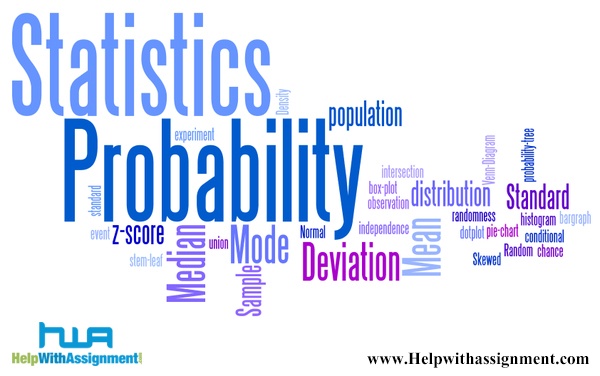Statistics – Probability
Statistics – Probability
Probabilities express the chance of events that cannot be predicted with certainty. Even unlikely events sometimes occur. The probability of an event is viewed as a numerical measure of the chance that the event will occur. The idea is naturally relevant to situations where the outcome of an experiment or observation exhibits variation.
The term experiment is limited to studies conducted in a laboratory. Rather, it is used in a broad sense to include any operation of data collection or observation where the outcomes are subject to variation. Rolling a die, drawing a card from a shuffled deck, sampling a number of customers for an option survey and quality inspection of items from a production line are just a few examples.
An experiment is the process of observing a phenomenon that has variation in its outcomes.
The sample space associated with an experiment is the collection of all possible distinct outcomes of the experiment.
Each outcome is called an elementary outcome, a sample event, or an element of the sample space.
An event is the set of elementary outcomes possessing a designated feature.
The elementary outcomes, which together comprise the sample space, constitute the ultimate breakdown of the potential results of an experiment. For instance, in rolling a die, the elementary outcomes are points 1, 2, 3, 4, 5 and 6, which together constitute the sample space.
The probability of an event is the numerical value that represents the proportion of times the event is expected to occur when the experiment is repeated many times under identical conditions. The probability of event A is denoted by P (A)
The probability of an event is the sum of the probabilities assigned to all the elementary outcomes contained in the event. The sum of the probabilities of all the elements of S or sample space must be 1.
Probability must satisfy:
·0 ≤ P(A) ≤ 1 for all events A
·P (A) = Σall e in A P (e)
·P (S) = Σall e in S P (e) =1
It is deduced that basic probability by reasoning from the definition that the probability of an event is the proportion of times the event is expected to occur in many repeated trails of the experiment.
The assignment of probabilities to all events in a sample space determines a probability model. In order to be a valid probability model, the probability assignment must satisfy the above conditions. Any assignment of P (ei) to the elementary outcomes will satisfy the three conditions of probability provided these numbers are nonnegative and their sum over all the outcomes ei in S is 1. However, the probability assigned to an event must also be in agreement with the concepts of probability as the proportion of times the event is expected to occur.
For more details you can visit our websites at https://www.helpwithassignment.com/statistics-assignment-help and http://www.helpwiththesis.com
Our previous articles on Statistics include Probability in Statistics, Using SPSS for Statistics, Hypothesis Testing, Correlation in Statistics
Book Your Assignment
Recent Posts

200+ Exclusive Legal Thesis Topics For 2024
Read More
How To Write Methodology In Thesis?
Read More
Boost Your Thesis Writing: 11 Proven Tips with Statement Examples!
Read More
The Ultimate Guide to Crafting a Killer Thesis Statement
Read More
6 Essential Steps To Kickstart Your Thesis Writing Process
Read MoreGet assignment help from subject matter experts!
4.7/5 rating | 10,000+ happy students | Great tutors 24/7
